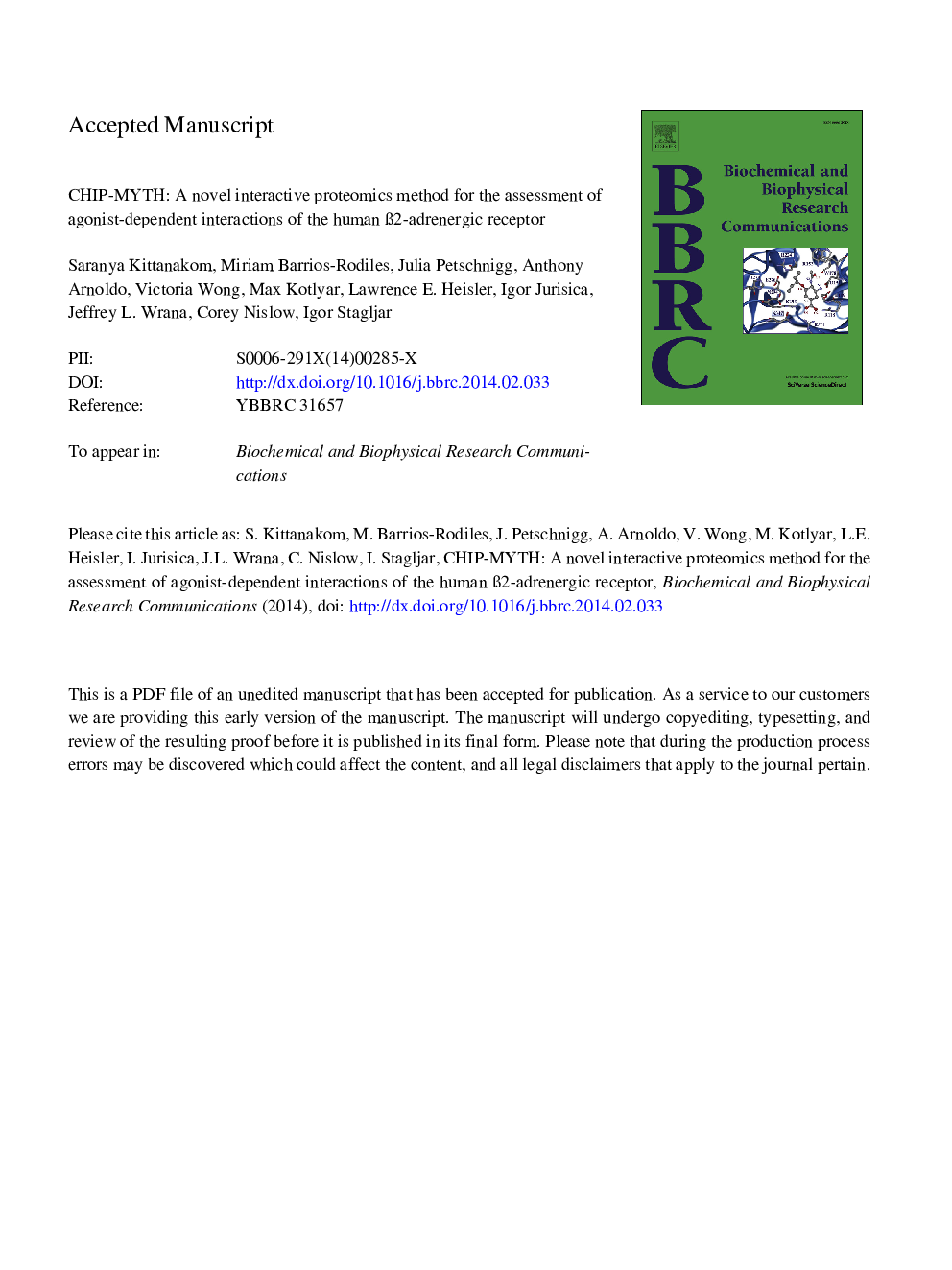| Article ID | Journal | Published Year | Pages | File Type |
|---|---|---|---|---|
| 10756904 | Biochemical and Biophysical Research Communications | 2014 | 26 Pages |
Abstract
G-protein coupled receptors (GPCRs) are involved in a variety of disease processes and comprise major drug targets. However, the complexity of integral membrane proteins such as GPCRs makes the identification of their interacting partners and subsequent drug development challenging. A comprehensive understanding of GPCR protein interaction networks is needed to design effective therapeutic strategies to inhibit these drug targets. Here, we developed a novel split-ubiquitin membrane yeast two-hybrid (MYTH) technology called CHIP-MYTH, which allows the unbiased characterization of interaction partners of full-length GPCRs in a drug-dependent manner. This was achieved by coupling DNA microarray technology to the MYTH approach, which allows a quantitative evaluation of interacting partners of a given integral membrane protein in the presence or absence of drug. As a proof of principle, we applied the CHIP-MYTH approach to the human β2-adrenergic receptor (β2AR), a target of interest in the treatment of asthma, chronic obstructive pulmonary disease (COPD), neurological disease, cardiovascular disease, and obesity. A CHIP-MYTH screen was performed in the presence or absence of salmeterol, a long-acting β2AR-agonist. Our results suggest that β2AR activation with salmeterol can induce the dissociation of heterotrimeric G-proteins, Gαβγ, into Gα and Gβγ subunits, which in turn activates downstream signaling cascades. Using CHIP-MYTH, we confirmed previously known and identified novel β2AR interactors involved in GPCR-mediated signaling cascades. Several of these interactions were confirmed in mammalian cells using LUminescence-based Mammalian IntERactome (LUMIER) and co-immunoprecipitation assays. In summary, the CHIP-MYTH approach is ideal for conducting comprehensive protein-protein interactions (PPI) screenings of full-length GPCRs in the presence or absence of drugs, thus providing a valuable tool to further our understanding of GPCR-mediated signaling.
Keywords
membrane yeast two-hybridlacZTrp3-ATβ2ARADEPPIMCsLEU3-amino-1,2,4-triazoleG-protein coupled receptorsAdenineMythsynthetic dropoutTryptophanProtein–protein interactionProtein-protein interactionsCubHISmultiple cloning siteTranscription factorhigh-throughput screeningLeucineNubhistidineBeta2-adrenergic receptor
Related Topics
Life Sciences
Biochemistry, Genetics and Molecular Biology
Biochemistry
Authors
Saranya Kittanakom, Miriam Barrios-Rodiles, Julia Petschnigg, Anthony Arnoldo, Victoria Wong, Max Kotlyar, Lawrence E. Heisler, Igor Jurisica, Jeffrey L. Wrana, Corey Nislow, Igor Stagljar,
